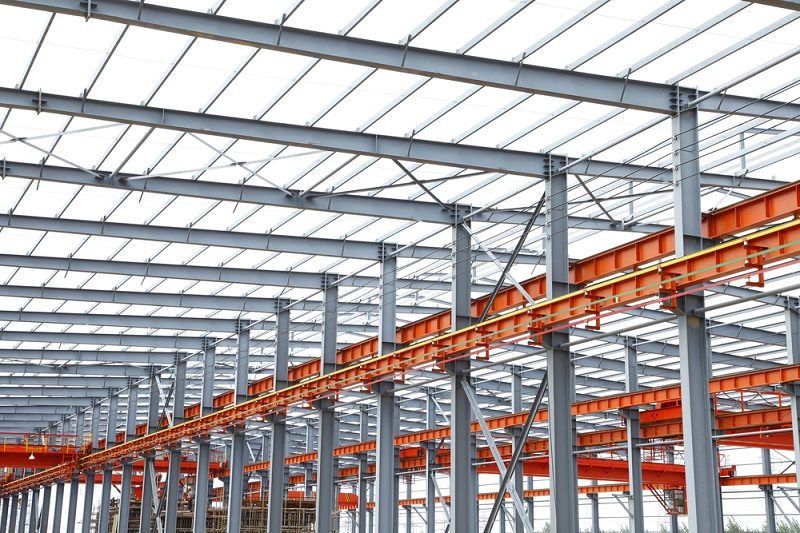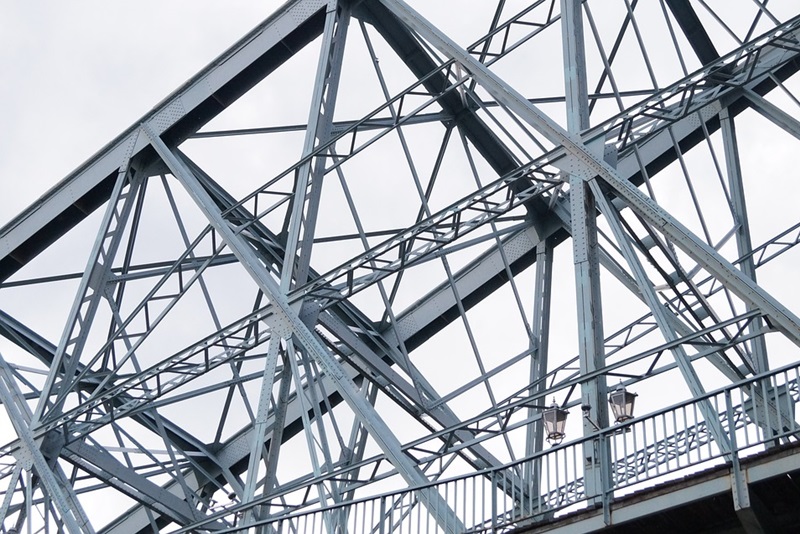Comprehensive Analysis of Cutting-Edge Techniques in Steel Construction Sector
As the steel fabrication sector proceeds to evolve, the assimilation of innovative methods has become necessary for staying affordable and fulfilling the needs of contemporary manufacturing standards. In this vibrant industry where technology plays a critical duty, recognizing the subtleties of these innovative strategies is not just an option but a necessity for those looking to forge in advance in the ever-evolving globe of steel fabrication.
Laser Reducing Advancements
In the world of steel fabrication, laser reducing advancements have transformed the precision and effectiveness of metal shaping processes. By using the power of concentrated laser beam of lights, makers can currently accomplish unparalleled levels of precision when cutting with different kinds of steels. This innovation makes it possible for intricate designs to be carried out with very little product wastage, making it an affordable option for sectors calling for high accuracy components.
One of the vital benefits of laser cutting is its capacity to handle a vast array of products, including stainless-steel, light weight aluminum, and carbon steel, with convenience. The procedure generates clean, burr-free sides, eliminating the need for additional completing actions. The non-contact nature of laser reducing reduces the danger of product contamination, resulting in higher high quality end items.
Furthermore, laser reducing equipments can be set to make swift, specific cuts, dramatically lowering manufacturing time contrasted to conventional cutting methods. This speed and accuracy make laser cutting specifically appropriate for automation environments where performance is paramount. As innovation remains to development, laser cutting is poised to play an increasingly crucial function in the steel fabrication sector.

CNC Machining Innovations
The development of CNC machining technologies has actually ushered in a brand-new age of precision and efficiency in the steel construction industry. Computer Numerical Control (CNC) machines have changed steel construction by offering unmatched accuracy and repeatability in the manufacturing procedure. Alpha reo. Among the key innovations in CNC machining is the integration of innovative software application systems that enable real-time tracking and modifications, resulting in boosted productivity and top quality control
Additionally, the growth of multi-axis CNC devices has actually permitted the construction of complex steel parts with complex designs that were previously testing to produce. These devices can carry out a vast array of machining operations, consisting of milling, boring, turning, and grinding, all with high levels of precision.
Furthermore, the unification of automation and robotics in CNC machining has streamlined manufacturing procedures, minimized lead times, and lessened the margin of error. This assimilation of advanced technologies not only improves efficiency however likewise guarantees consistent quality across all made steel components. In verdict, CNC machining technologies continue to drive advancements in the steel manufacture sector, setting brand-new standards for precision and efficiency.
Automated Welding Technologies
Automated welding technologies have reinvented the steel manufacture market, enhancing efficiency and precision in the welding procedure. These sophisticated innovations utilize computer-controlled systems to automate the welding procedure, bring about greater productivity levels and improved weld top quality. One of the crucial benefits of automated welding is the ability to perform intricate welds with constant precision, lowering the likelihood of errors and rework.
Robotic welding systems are at the forefront of automated welding innovations, using unparalleled rate and accuracy. These systems can deal with a variety of welding jobs, from basic to complex, with convenience (steel fixing). By utilizing advanced sensing units and software application, robot welders can adjust to variations in material and joint geometry, making sure an uniform and trusted weld
Additionally, automated welding modern technologies enhance workplace security by minimizing the exposure of human welders to hazardous fumes and extreme warm. As the steel fabrication sector continues to evolve, including automated welding modern technologies will be necessary for business seeking to stay competitive and meet the growing needs for premium bonded items.
Robotics Integration in Fabrication
Making use of robot systems in manufacture processes has actually ended up being a pivotal technique for boosting performance and precision in her comment is here contemporary production settings. you could check here Robotics combination in steel manufacture provides a myriad of advantages, including boosted performance, improved quality assurance, and boosted precaution. These sophisticated robotic systems are furnished with sophisticated sensing units and shows abilities, permitting them to carry out elaborate jobs with a high level of accuracy and repeatability.
Among the crucial benefits of robotics assimilation in steel manufacture is the capability to automate repeated tasks, such as material handling, reducing, welding, and setting up processes. This not only accelerates production cycles yet additionally minimizes the threat of human mistake, bring about higher total item high quality. In addition, robotics can operate 24/7, significantly boosting production output and conference tight task deadlines.

3D Printing in Steel Manufacturing
Having actually changed the steel fabrication industry with robotics assimilation, the growing exploration of 3D printing in steel manufacturing is poised to further breakthrough the world of modern-day production strategies. 3D printing, likewise referred to as additive manufacturing, offers extraordinary style freedom and complexity, enabling the creation of elaborate steel structures that were formerly unattainable with typical manufacturing approaches. By utilizing computer-aided layout (CAD) software, makers can exactly manage the layer-by-layer deposition of steel material, leading to components with enhanced geometries and functionalities.
Among the key advantages of 3D printing in steel production is its ability to minimize product waste dramatically. Unlike subtractive manufacturing procedures where excess product is trimmed away, 3D printing only uses the necessary quantity of steel required for the last component. This efficiency not just results in cost savings yet additionally Extra resources straightens with sustainable manufacturing techniques by reducing environmental impact.
Additionally, 3D printing makes it possible for fast prototyping and customization, enabling the manufacturing of little batches of intricate steel elements with short lead times. As the innovation remains to mature and become much more easily accessible, its integration into mainstream steel manufacture procedures is anticipated to drive technology and effectiveness throughout the market.
Conclusion
Finally, the steel construction market has actually seen substantial improvements in strategies such as laser cutting, CNC machining, automated welding, robotics integration, and 3D printing. These advanced technologies have actually revolutionized the method steel items are made, leading to raised performance, cost-effectiveness, and accuracy. Proceeded investment in these ingenious techniques is important for the sector to stay affordable and fulfill the needs of contemporary production procedures.
As the steel fabrication sector proceeds to develop, the combination of innovative techniques has actually become vital for staying affordable and fulfilling the demands of modern manufacturing requirements.One of the crucial benefits of laser cutting is its ability to manage a vast range of products, including stainless steel, light weight aluminum, and carbon steel, with convenience.Automated welding innovations have transformed the steel construction industry, boosting performance and precision in the welding procedure.Having reinvented the steel fabrication sector with robotics integration, the blossoming exploration of 3D printing in steel production is positioned to more advance the realm of modern manufacturing strategies.In final thought, the steel manufacture industry has seen considerable advancements in methods such as laser cutting, CNC machining, automated welding, robotics combination, and 3D printing.